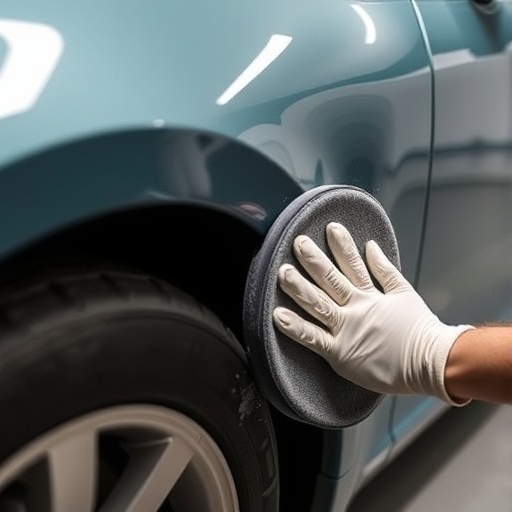How to Sand a Car for Paint
Sanding a car for paint is a crucial step in the automotive refinishing process. Proper sanding ensures a smooth surface for paint application, improves adhesion, and ultimately leads to a professional-looking finish. In this guide, we’ll cover everything you need to know about sanding a car for paint, including tools, techniques, and tips for achieving the best results.
Table of Contents
- [Understanding the Importance of Sanding](#understanding-the-importance-of-sanding)
- [Tools and Materials Needed](#tools-and-materials-needed)
- [Preparing the Car for Sanding](#preparing-the-car-for-sanding)
- [Sanding Techniques](#sanding-techniques)
- [Wet Sanding vs. Dry Sanding](#wet-sanding-vs-dry-sanding)
- [Finishing Up the Sanding Process](#finishing-up-the-sanding-process)
- [Common Mistakes to Avoid](#common-mistakes-to-avoid)
- [FAQ](#faq)
- [Conclusion](#conclusion)
- Surface Preparation: Sanding removes old paint, rust, and imperfections, creating a smooth surface for the new paint.
- Adhesion: A well-sanded surface allows the new paint to adhere better, reducing the risk of flaking or peeling over time.
- Aesthetics: A smooth finish enhances the overall appearance of the vehicle and can significantly improve its resale value.
- Sandpaper: Various grits (80, 120, 220, 400, and 600)
- Sanding Block: For even pressure and control
- Orbital Sander: Optional, but can speed up the process
- Dust Mask: To protect against dust inhalation
- Safety Goggles: To protect your eyes from debris
- Gloves: To protect your hands
- Automotive Primer: For priming after sanding
- Automotive Paint: Your desired paint color
- Clear Coat: For the final finish
- Tack Cloth: To remove dust and debris after sanding
- Water Spray Bottle: If wet sanding
- This will help remove old paint, rust, and body filler.
- Use a sanding block for flat surfaces and an orbital sander for larger areas.
- Sand in a circular motion or back and forth, applying even pressure.
- This smooths out the surface and prepares it for finer sanding.
- Ensure you remove all scratches from the previous sanding.
- This step is crucial for achieving a smooth surface ready for paint.
- If you prefer, you can wet sand at this stage to reduce dust and improve the finish.
- Use plenty of water to keep the surface lubricated.
- Change sandpaper frequently to avoid clogging.
- Keep the surface wet throughout the process.
- Skipping Grits: Avoid jumping from coarse to fine grit without intermediate steps. This can leave scratches that are hard to remove.
- Over-sanding: Be cautious not to sand too aggressively, as this can lead to uneven surfaces and damage the underlying material.
- Neglecting Safety Gear: Always wear a dust mask and goggles to protect yourself from harmful particles.
- Not Cleaning the Surface: Failing to remove dust and contaminants can lead to poor paint adhesion.
Understanding the Importance of Sanding
Sanding is a critical step in the painting process for several reasons:
Tools and Materials Needed
Before you begin sanding, gather the following tools and materials:
Essential Tools
Additional Supplies
Preparing the Car for Sanding
Before you start sanding, it’s essential to prepare the car properly. Follow these steps:
1. Choose the Right Environment: Work in a well-ventilated area, ideally indoors or in a shaded area to avoid dust and debris.
2. Wash the Car: Clean the car thoroughly to remove dirt, grease, and other contaminants. Use a degreaser if necessary.
3. Remove Trim and Accessories: Take off any trim, moldings, and accessories that could get damaged during sanding.
4. Mask Off Areas: Use painter’s tape to cover windows, rubber seals, and any areas you don’t want to sand.
Sanding Techniques
The Sanding Process
1. Start with Coarse Grit Sandpaper (80-120 grit):
2. Progress to Medium Grit Sandpaper (220 grit):
3. Finish with Fine Grit Sandpaper (400-600 grit):
Wet Sanding vs. Dry Sanding
| Feature | Wet Sanding | Dry Sanding |
|---|---|---|
| Dust Control | Minimal dust, cleaner environment | More dust generated |
| Surface Smoothness | Smoother finish | Can leave scratches if not careful |
| Time Efficiency | Slower due to water application | Faster, especially for rough surfaces |
| Equipment Required | Water spray bottle | None required |
Tips for Wet Sanding
Finishing Up the Sanding Process
Once you’ve completed sanding, it’s essential to clean the surface properly before painting.
1. Remove Dust: Use a tack cloth to wipe down the entire surface, removing all dust particles.
2. Inspect the Surface: Check for any imperfections or areas that need additional sanding.
3. Apply Primer: If necessary, apply an automotive primer to the sanded areas, following the manufacturer’s instructions.
4. Let Primer Dry: Allow the primer to dry completely before proceeding with paint application.
Common Mistakes to Avoid
FAQ
How long does it take to sand a car?
The time it takes to sand a car depends on the size of the vehicle and the condition of the paint. On average, it can take anywhere from a few hours to a full day.
Can I sand a car by hand?
Yes, sanding by hand is possible and can be effective, especially for detailed areas. However, it requires more effort and time compared to using an orbital sander.
Is wet sanding better than dry sanding?
Wet sanding can provide a smoother finish and reduce dust but may take longer. It ultimately depends on personal preference and the specific project at hand.
What grit sandpaper should I start with?
Start with 80 or 120 grit sandpaper for removing old paint and imperfections, and then gradually move to finer grits.
Do I need to sand after primer?
Yes, lightly sanding after applying primer helps to create a smooth surface for paint application.
Conclusion
Sanding a car for paint is a vital step that requires attention to detail and the right techniques. By following the steps outlined in this guide, you can achieve a professional finish that enhances the appearance and longevity of your vehicle. Remember to take your time, use the proper tools, and be patient throughout the process. Happy sanding!

